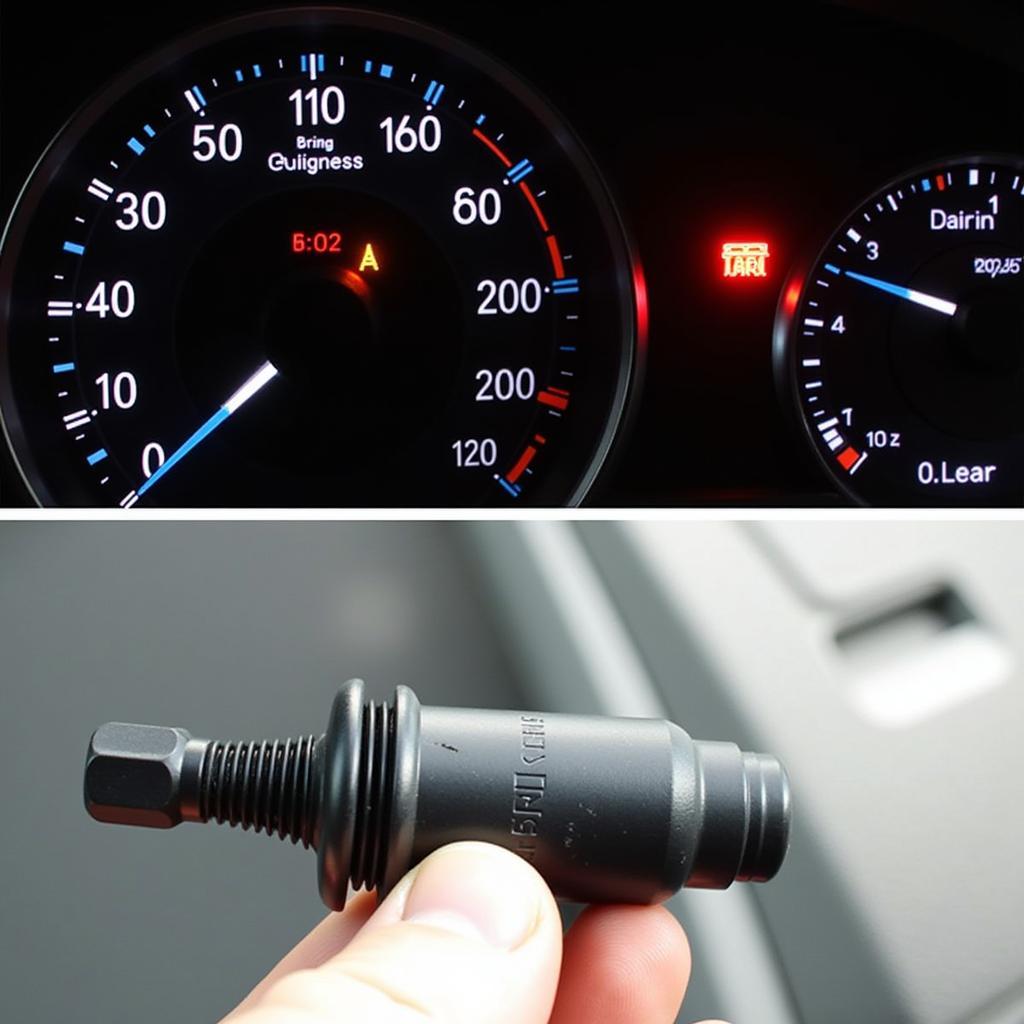Modern vehicles rely heavily on a network of sensors to monitor various systems and ensure optimal performance. When these sensors malfunction, it can lead to a range of drivability issues, reduced fuel efficiency, and even increased emissions. Understanding the symptoms and diagnostics of different faulty car sensors is crucial for effective car repair.
A faulty sensor can manifest in various ways, from subtle changes in performance to complete system failures. This article will delve into the common symptoms and diagnostic procedures associated with various car sensor malfunctions. We’ll cover everything from the common culprits like the oxygen sensor to more specialized sensors like the crankshaft position sensor. what is diagnostic assessment on a cars will provide further information about general car diagnostics.
Common Car Sensor Problems: Symptoms and Diagnostics
Several sensors play a vital role in your car’s operation. Here’s a breakdown of some common sensor issues:
Oxygen Sensor (O2 Sensor)
The oxygen sensor measures the amount of oxygen in the exhaust gases. A faulty O2 sensor can lead to:
- Symptoms: Decreased fuel economy, rough idling, engine misfires, and a lit Check Engine Light.
- Diagnostics: Use an OBD-II scanner to check for specific error codes related to the oxygen sensor. A professional mechanic can also perform a voltage test on the sensor to determine its functionality.
Mass Air Flow (MAF) Sensor
The MAF sensor measures the amount of air entering the engine. A malfunctioning MAF sensor can result in:
- Symptoms: Poor acceleration, rough idling, stalling, and black smoke from the exhaust.
- Diagnostics: Similar to the O2 sensor, an OBD-II scanner can retrieve error codes related to the MAF sensor. Cleaning the MAF sensor with a specialized cleaner can sometimes resolve the issue.
Manifold Absolute Pressure (MAP) Sensor
The MAP sensor measures the air pressure inside the intake manifold. A failing MAP sensor can cause:
- Symptoms: Reduced engine power, poor fuel economy, and hesitation during acceleration.
- Diagnostics: Check for relevant error codes using an OBD-II scanner. A vacuum test can also be performed to assess the MAP sensor’s performance.
Crankshaft Position Sensor
This sensor detects the position and speed of the crankshaft, crucial for ignition timing and fuel injection. A faulty crankshaft sensor often results in:
- Symptoms: The engine failing to start, intermittent stalling, and a noticeable drop in engine performance.
- Diagnostics: This usually requires specialized diagnostic equipment to measure the sensor’s signal.
Camshaft Position Sensor
Similar to the crankshaft sensor, the camshaft position sensor monitors the camshaft’s position. Problems with this sensor can lead to:
- Symptoms: Engine misfires, rough idling, and reduced engine power.
- Diagnostics: An OBD-II scanner can identify camshaft position sensor-related error codes.
Diagnosing Car Sensor Problems with OBD-II Scanners
OBD-II scanners are invaluable tools for diagnosing car sensor problems. They can retrieve diagnostic trouble codes (DTCs) that pinpoint the specific sensor or system causing the issue. diagnostics images on broken cars provides examples of diagnostic images. Understanding these codes can save you time and money on repairs.
What to Look for When Using an OBD-II Scanner:
- Specific Error Codes: Pay attention to the specific DTCs retrieved by the scanner. These codes correspond to specific sensor or system malfunctions.
- Pending Codes: These codes indicate a potential problem that hasn’t yet fully developed into a fault.
- Freeze Frame Data: This data captures the vehicle’s operating conditions at the time the error code was triggered, offering valuable insights into the root cause of the problem.
Expert Insights on Car Sensor Diagnostics
“Accurate diagnosis is the foundation of effective car repair,” says John Smith, ASE Certified Master Technician. “Using the right diagnostic tools and understanding the symptoms is key to identifying and resolving sensor-related problems quickly.”
Conclusion: Keeping Your Car’s Sensors in Check
Understanding the symptoms and diagnostics different car sensors faulty can help you address potential issues promptly and prevent further damage to your vehicle. While some simple fixes, like cleaning a MAF sensor, can be done at home, more complex issues require professional attention. Regular maintenance and prompt diagnosis of sensor-related problems are crucial for ensuring optimal vehicle performance, fuel efficiency, and longevity. Don’t hesitate to consult a qualified mechanic for accurate diagnosis and repair of your car’s sensors. car diagnostics rockville md offers diagnostic services in Rockville, MD.
FAQs
- What is the most common symptom of a faulty car sensor? The Check Engine Light illuminating is a frequent indicator.
- Can I drive my car with a faulty sensor? While possible, driving with a faulty sensor can lead to further damage and reduced fuel economy.
- How much does it cost to replace a car sensor? The cost varies depending on the type of sensor and the make and model of your vehicle.
- How can I prevent car sensor problems? Regular maintenance and inspections can help prevent many sensor-related issues.
- What are some other common faulty car sensors? Other common issues include the throttle position sensor, coolant temperature sensor, and wheel speed sensors. diagnostics to wire a car can provide information about wiring issues related to sensors.
- What are the symptoms of a faulty ABS sensor? Common symptoms include the ABS warning light illuminating, longer braking distances, and a pulsating brake pedal.
- Can a faulty sensor cause my car to fail emissions testing? Yes, a faulty oxygen sensor, for example, can directly impact emissions levels.
Need further assistance? Contact us via WhatsApp: +1(641)206-8880, or Email: [email protected]. Our customer service team is available 24/7.


